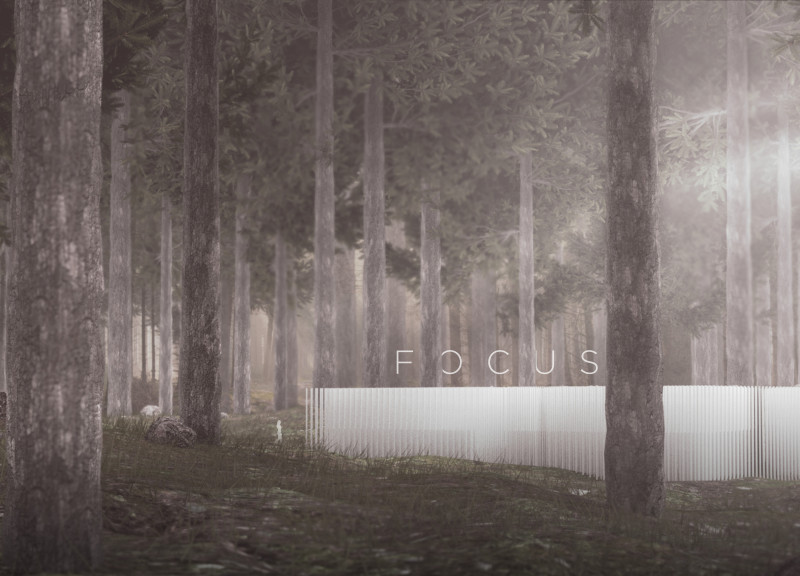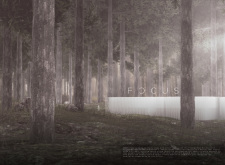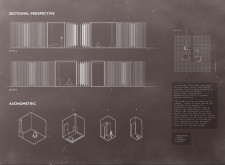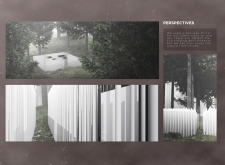5 key facts about this project
The design features a cabin located within a thick forest, specifically created to serve as a central point amid the greenery. Its design concept emphasizes visibility and ease of access, allowing visitors to engage with the natural surroundings while providing a dedicated space for meditation and reflection.
Vertical Elements
The cabin showcases a series of repeated vertical pillars that mirror the natural lines of the trees around it. This arrangement creates a rhythmic facade, establishing a clear visual contrast with the chaotic layout of the forest. The pillars provide a sense of order while blending with the environment, enhancing the cabin's presence.
Pathways and Movement
Strategic pathways connect various areas of the cabin, formed by the removal of select pillars. This design promotes openness and facilitates easy movement. Visitors can explore the space without feeling confined, while also experiencing the connection to nature that the cabin aims to foster. These pathways encourage exploration and self-reflection, aligning with the cabin’s main purpose.
Interior Spaces
Inside, the cabin is divided into three main areas: a meditation room, a storage space, and sleeping quarters. The meditation area takes precedence, being the largest and emphasizing the cabin's function as a retreat for focused activities. This thoughtful division ensures that each space serves its purpose, creating a calm and welcoming environment for users.
Materiality and Reflection
A key design element is the use of a two-way mirror for the cabin walls, chosen to create a reflective surface. This choice enables the building to mirror the surrounding landscape. Occupants enjoy unobstructed views of nature from inside, fostering a connection between the interior and the exterior. The reflective surfaces create a visual link that enhances the overall experience of being in the forest.
The design elements and layout work together to create a peaceful space that promotes meditation, while remaining connected to the forest environment.


























